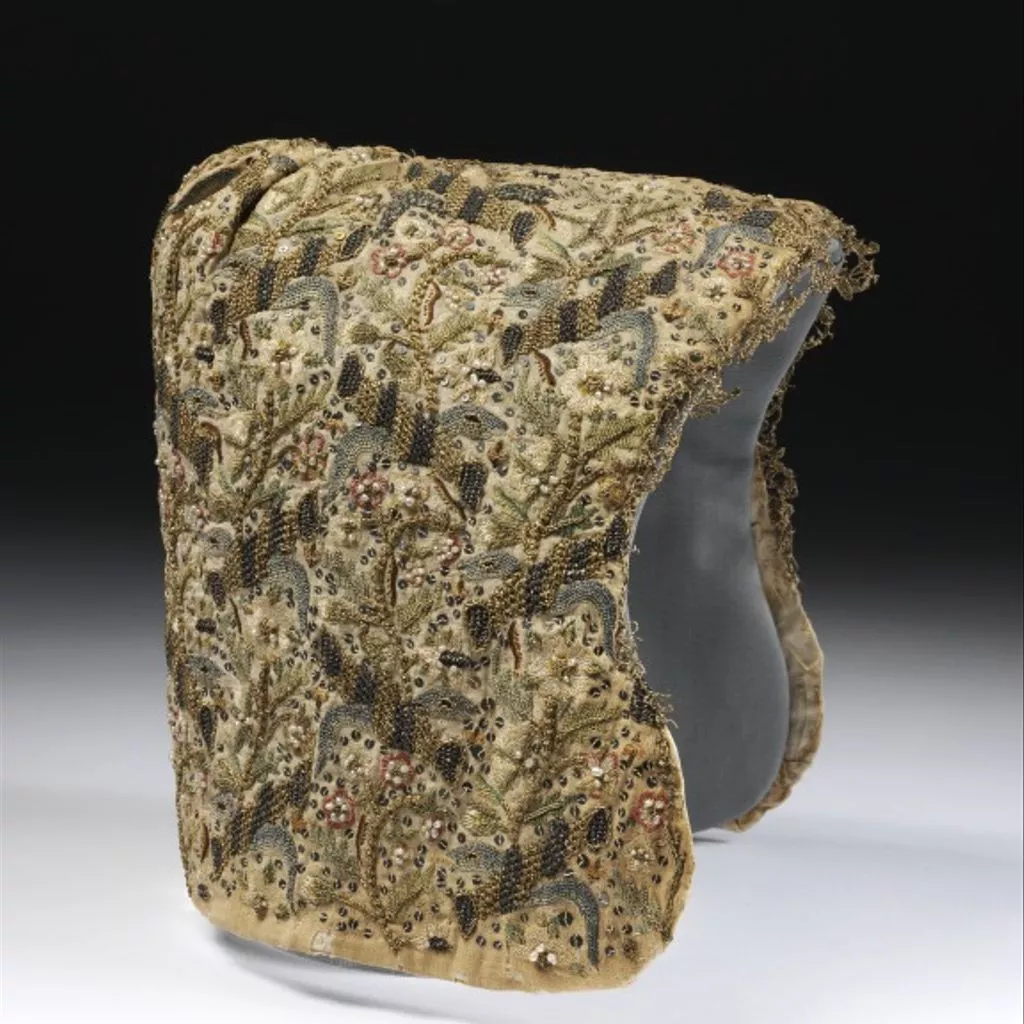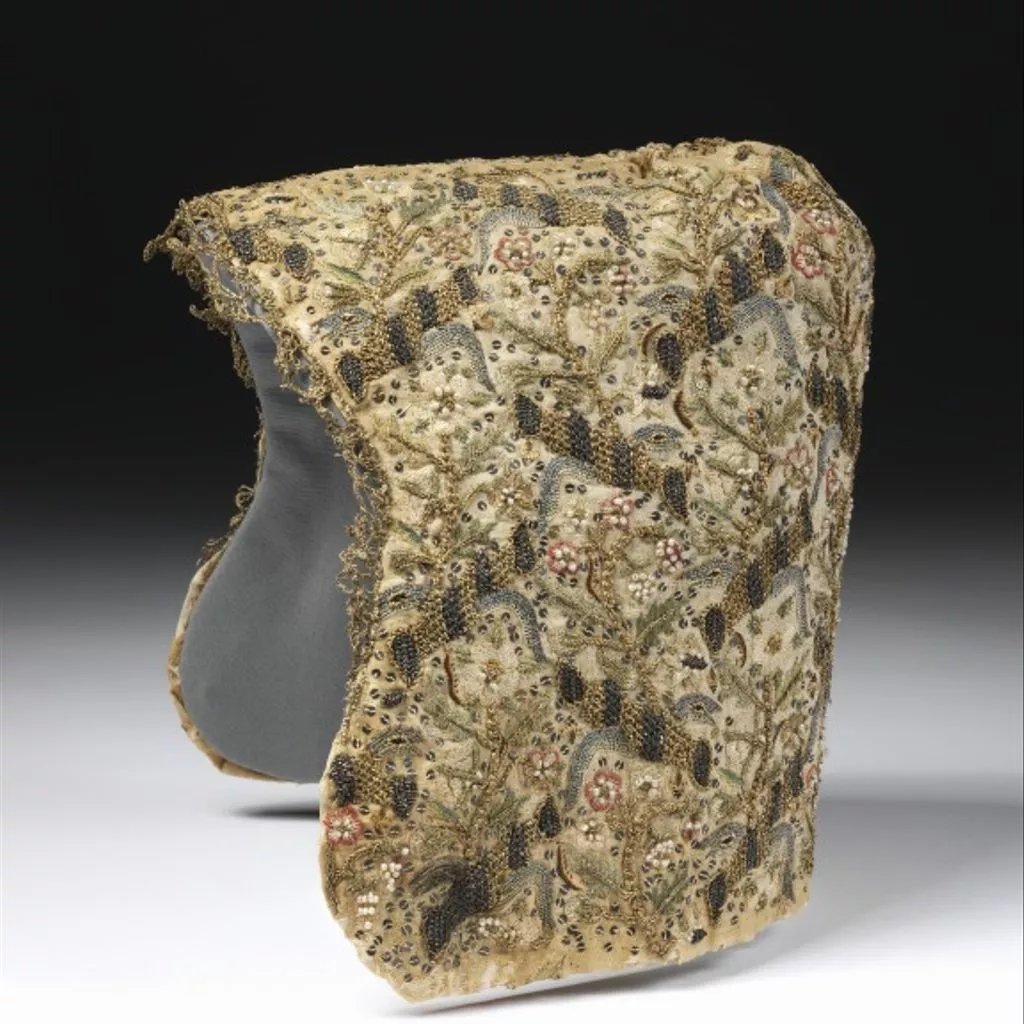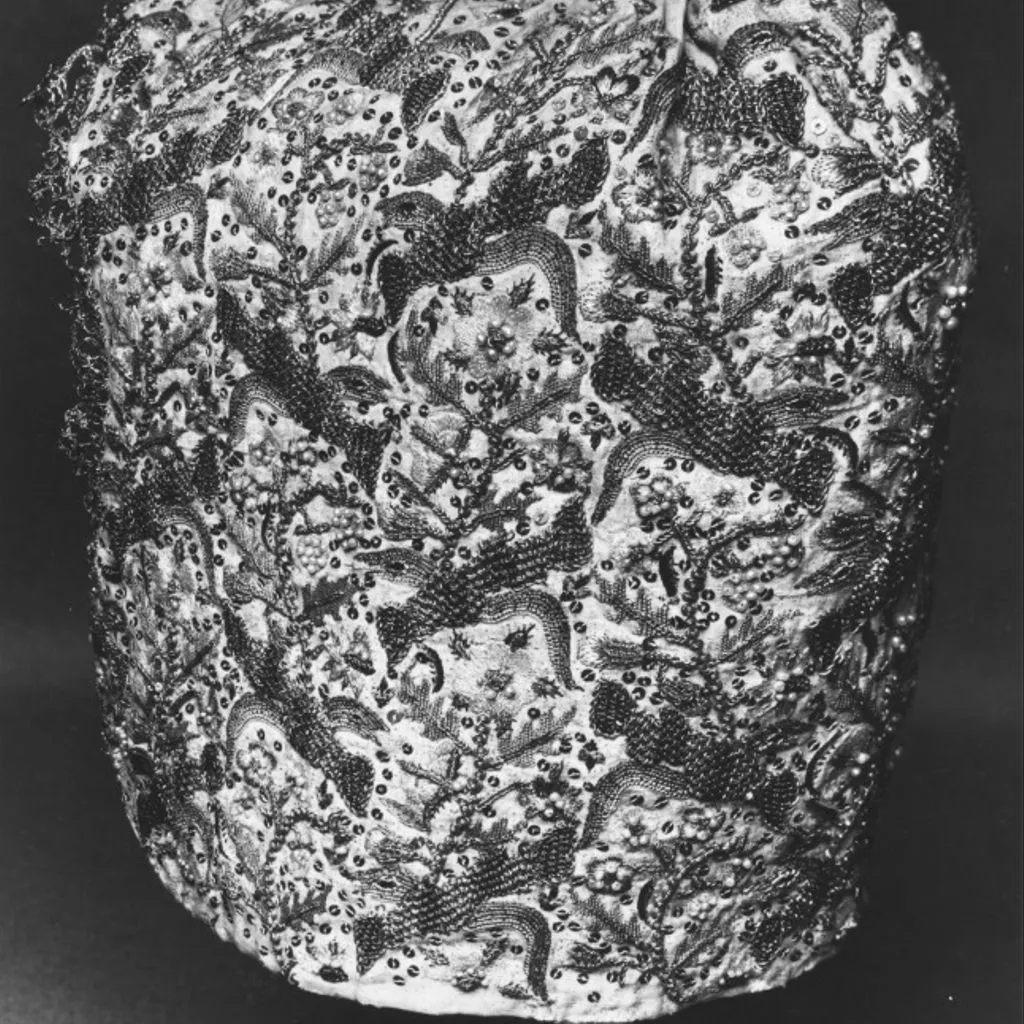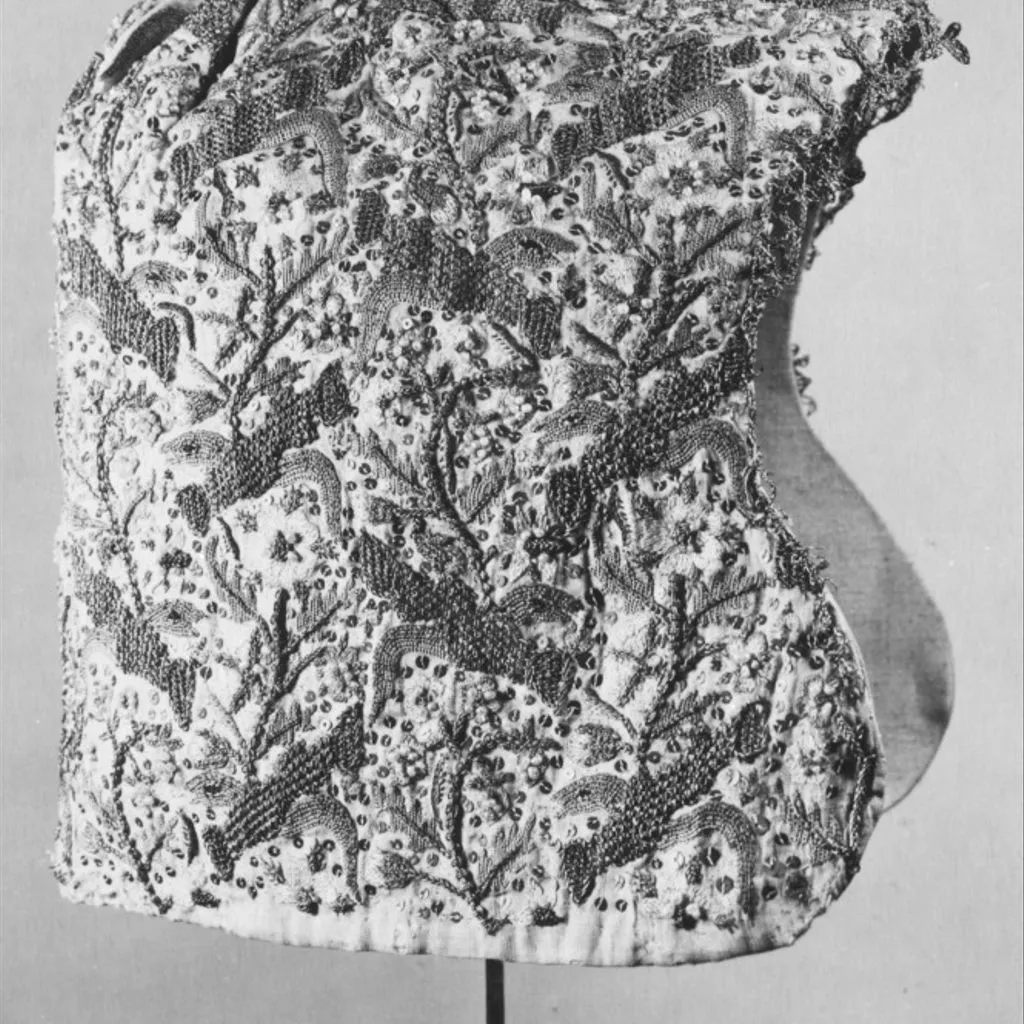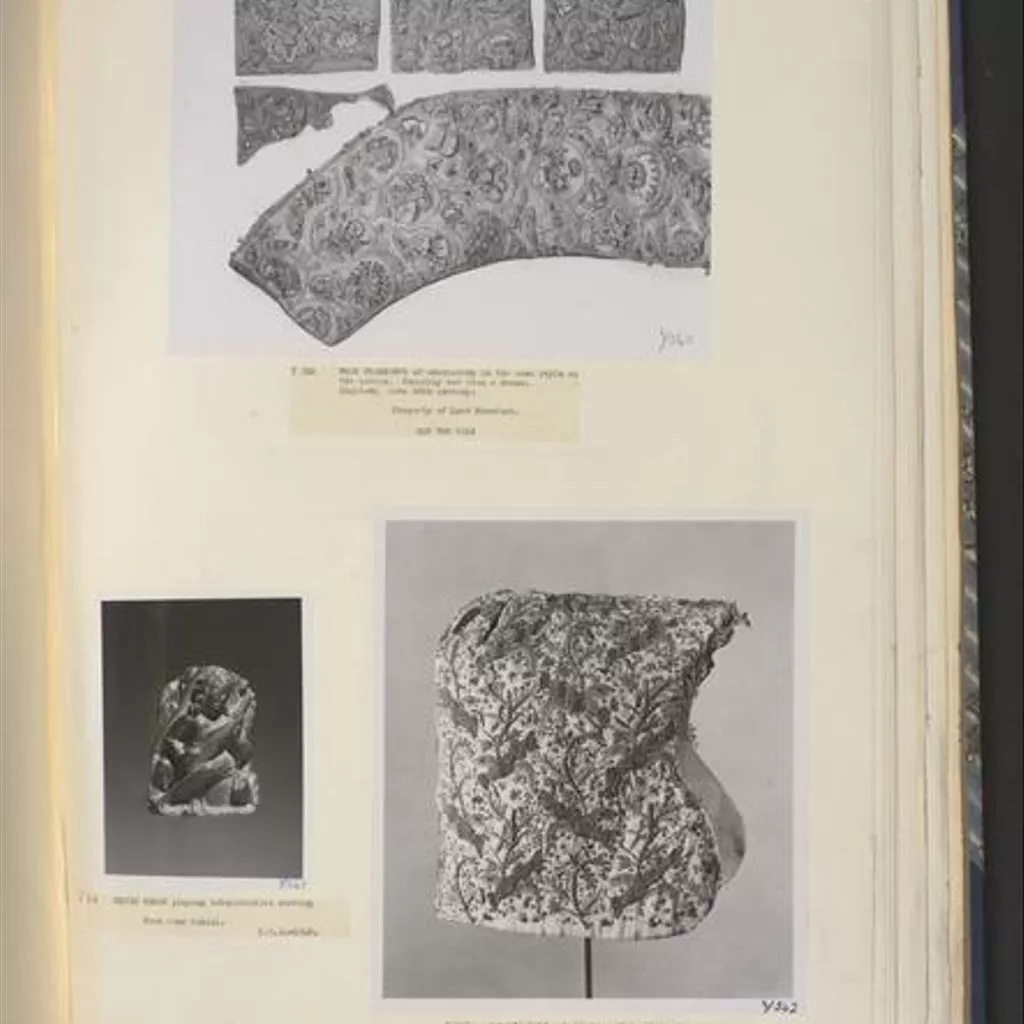Description
Woman's coif. English; first quarter 17th century. Linen embroidered with silver-gilt and silver thread and silks: ladder, chain, cable chain, heavy chain, long and short and detached buttonhole stitches with laid and couched work, seed pearls and spangles. Trimmed with silver-gilt bobbin lace. Bequeathed by Mr. Frank Ward. []
Treasures of the Royal Courts: Tudors, Stuarts and the Russian Tsars label text:
Nightcap and coif
About 1610; 1600
Men wore nightcaps when relaxing at home, in contrast to more formal headwear worn for public business during the day. The informal head covering for women was the coif. For the wealthy, these could be highly decorated with expensive metal thread and are of great beauty.
England
Nightcap: linen, embroidered in silver and gilded silver thread,
with metal bobbin lace
Coif: linen, embroidered in silver and gilded silver thread,
spangles and pearls, with metal bobbin lace
Coif bequeathed by Frank Ward
V&A T.75-1954, 239-1960 []
Woman's coif of embroidered linen in silk, silver and silver-gilt threads, England, 1575-1625
Woman's linen coif embroidered with coloured silks, silver and silver-gilt threads in satin, chain, detached buttonhole stitch and plaited braid stitch, and with silver-gilt spangles and freshwater pearls in a repeating pattern of flowers and a snake. Along the front edge are remnants of silver-gilt bobbin lace. Later conservation work includes re-backing the coif on cotton and re-stitching the top seam. Lined with muslin.
This is a more luxurious version of coif, embroidered in coloured silks, embellished with precious metal threads and freshwater pearls. The repeated motif of a snake with a rose and floral sprigs may have been inspired by the visual images in popular emblem books.
Until the end of the 17th century the coif was informal headwear for women. Plain linen versions were worn by the working-class. Middle-class and aristocratic women wore elaborately decorated coifs. It would have been worn by itself indoors, or with a hat on top in public. In Western Europe it was customary for both men and women to cover their heads in public up until the 1960s. A hat was an essential part of respectable dress and, from a health perspective, head coverings were considered necessary to protect against chills and disease.








